Sometimes when walking around the Vancouver Art Gallery, I watch other people instead of looking at the art. It’s interesting to see how much or how little time is spent with individual artworks. It’s a reminder that between the artist’s intent and the audiences’ perception, many different worlds of experience are taking place.
This is especially the case with About Time, the new exhibition from Jin-me Yoon at the Vancouver Art Gallery. About Time is a major exhibition, incorporating not only Yoon’s work, but also bringing the physical layout of the gallery itself into play, wrapping installations around curved, non-linear pathways that allow you to perambulate around the VAG, taking in the artist’s work in a measured and organic fashion.
Yoon, a Korean-born, Vancouver-based artist, incorporates photography, research, film and video elements into densely layered investigations and installations. Her work has been exhibited widely and is included in the collections of the National Gallery of Canada, the Royal Ontario Museum and the Seoul Museum of Art, among others. In 2022, Yoon was awarded the Scotiabank Photography Award.
If you’re going to take in About Time, my advice is you will actually need some time to take it in. Many of the video installations run close to 30 minutes. So, if you want the full flavour of the show, you will need at least a couple of hours to sit, watch and think about the sheer range of issues in a given work before you amble off to the next.
Yoon, who currently teaches at Simon Fraser University, has been making art for decades. But the bulk of the work featured in About Time is drawn from the last 10 years. The exhibition explores the Korean diaspora, the lingering effects of colonialism, the complicated relationships between children and parents, the military industrial complex, and the intricacy of Canadian identity. All of this is underscored by the ongoing perpetuity of trees, sea and sky. A great deal of the exhibition’s more esoteric concepts are grounded in physical stuff, digging in the dirt and sand, boring holes in the Earth.
A number of the works feature people digging giant holes, making great mounds of mud and sand as a consequence. Some of those depicted are members of the artist’s family, dressed in ordinary street clothes and, at other times, in military garb. Sometimes the holes are quite literal, and other times more metaphorical.
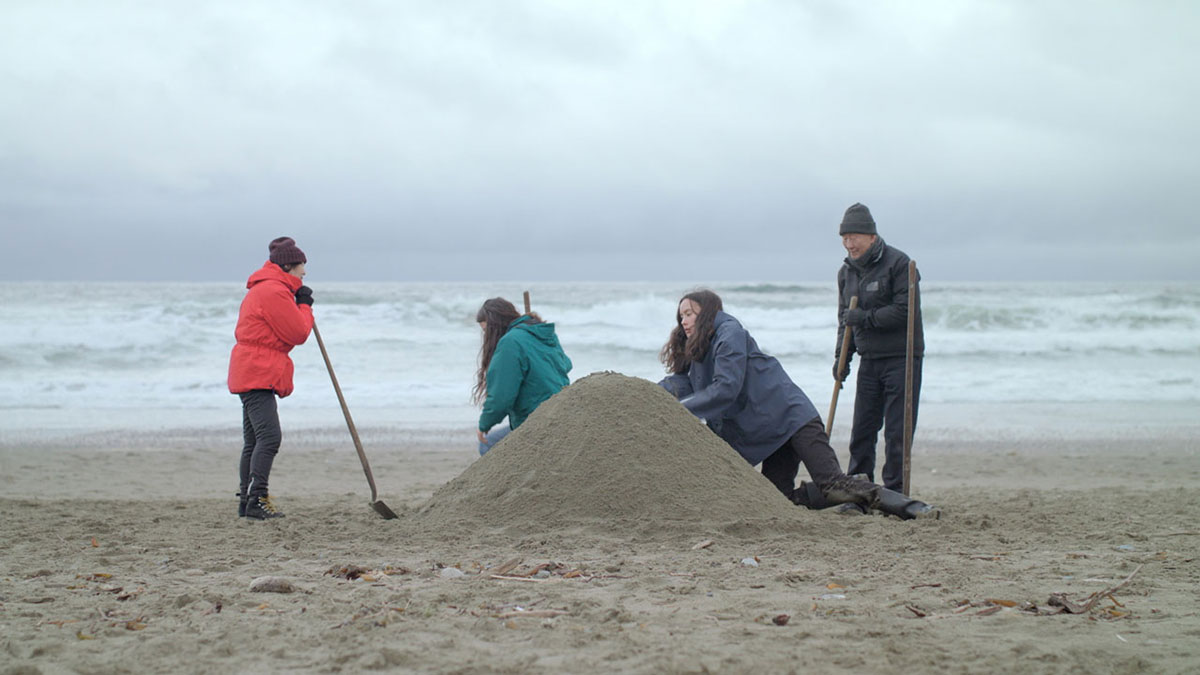
“Untunnelling Vision” is a case in point. The installation, composed of video elements, photographs and what looks to be a big old pile of rubble, is both visually compelling and also a bit impenetrable at first glance.
The video, shot on location on Tsuut’ina Nation near Calgary, features two young men walking around an old village that was actually the film set for the Second World War drama Passchendaele. There’s also a rodeo clown and a group of people seemingly enacting a ritual that involves banging rocks together and manipulating lengths of rubbery tubing. In the centre of the installation is what appears to be a pile of loose boulders, some of which have been painted primary shades of red, blue and yellow.
If you knew little of the artist or her oeuvre, what would your first take be? Do you need all of the backstory in order to appreciate the work, or would you simply nod sagely after a few minutes and then saunter off to the next piece? I guess it depends on one’s level of patience and the amount of time that you can give to any one individual piece of work, but some context does help.
The two locations featured in the video are close to the border between the Tsuut’ina Nation and Calgary proper. In addition to the remaindered film set, a new construction site was purchased by the City of Calgary for a major highway project, the Southwest Ring Road. In putting the work together, Yoon worked with Elders from the Treaty 7 nations to separate out some of the history specific to the land in question. Of the two young men featured in the video, one is multidisciplinary artist and musician seth cardinal dodginghorse and the other is the artist’s son Hanum Yoon-Henderson.
In 2020, dodginghorse staged a protest at the site of the contested land, cutting off his braids as a statement about his family’s eviction from their home to make way for the ring road construction.
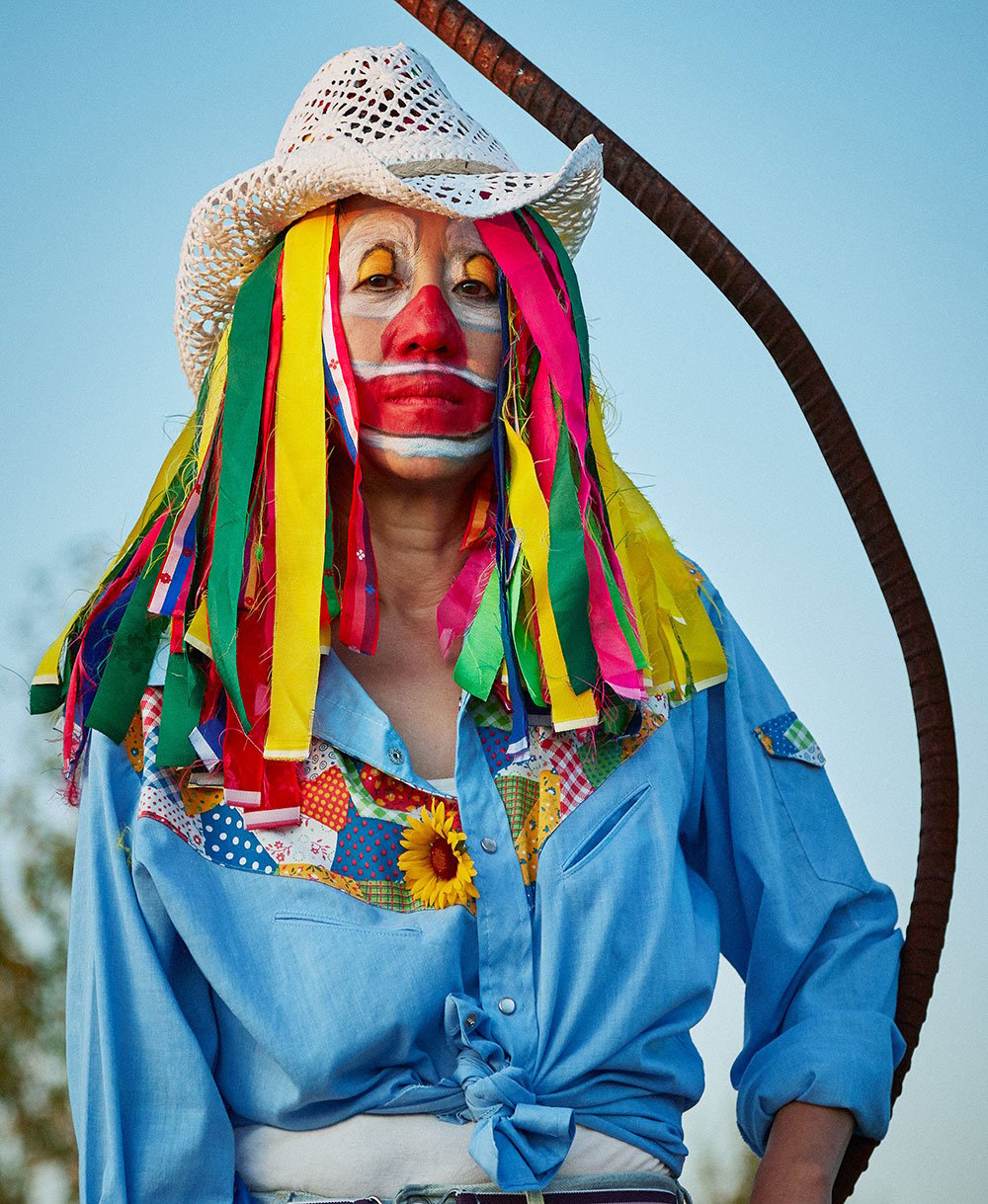
The rodeo clown, with her brightly coloured ribboned locks, recalls not only the Calgary Stampede clowns, but also traditional Korean dance performance. The colours of her hair, echoed in the rocks in the centre of the installation, are the same bright primary shades common in saekdong, a traditional textile designed to bring good luck and ward off evil.
Then there is the musical performance by dodginghorse and Yoon-Henderson that takes place in the ring road tunnel, as well as the group of folks gathered in a grassy field, handing the coloured stones hand over hand around the circle.
Not to be disingenuous, but sometimes I wonder what people who just wandered into the art gallery off the street make of such a densely wadded work. There is the straightforward interest and pleasure that comes from just looking, but after that, what happens? Do you need a deeper, more profound engagement in order to better understand what the artist is trying to say?
Maybe there is no right answer to this question. Everyone has their own way of looking at art. But the complexity of the work on display necessitates at least some familiarity with what was being explored in order to expand the experience.
It can, however, feel a bit overwhelming.
Most of the work in About Time has similarly complex conceptual frameworks, a density of information and process that radiates out like an almost tangible aura. In the media preview of the show, so much time was spent talking about the work behind the work that I scrawled “TOO MUCH TALKING” in my notebook out of frustration. After a while, one just wants to be left alone to experience the actual stuff itself, without explication and copious verbalizing. To come to it without the blizzard of references and associations to see what it says to you.
It all takes time.
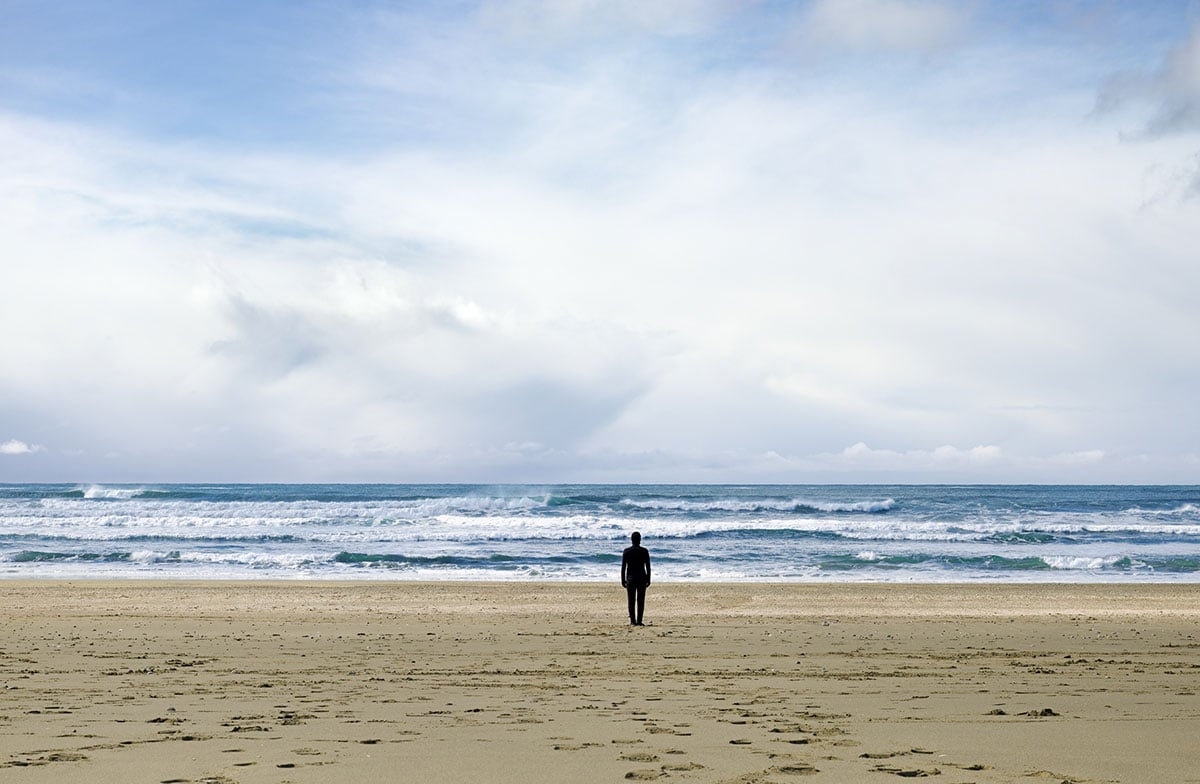
To be fair, it’s easy to bemoan the current state of our collective attention span, fractured and multi-versed as it is with the overwhelming number of things vying for our time and interest. In this aspect, artists do not have it easy. To her credit, Jin-me Yoon has pursued the things that fascinate her with an extraordinary discipline.
Many of the works included in About Time explore common themes of vulnerability, mortality, temporality, laid down in stratified sedimentary layers that accrue in gradual fashion. Whether in Korea or the Gulf Islands, the weight of history, scored deeply into the landscape, emerges with metronomic regularity throughout the show.
In “Living Time,” a series of different people are captured standing beside trees as part of a collection of photographs and a central video installation. In one image, they’re standing upright facing down the camera and in another paired image, they’re depicted lying on the forest floor like they’ve been cut off at the roots. The video component features a varied montage that features a young man hiking through the forest, carrying an older person on his back. A soldier moves through the same forest, but perhaps in another time and place. And again, there is a lot to unpack. The gallery has installed QR codes to provide additional access to information.
At some point in About Time, you might just feel really tired and want to rest your eyes and your mind for a while. Thankfully, there is a place to do that. In one room at the Vancouver Art Gallery, you can flop down on the floor into one of the beanbag chairs and stare at the psychedelic phantasmagoria of colour and shapes that are projected onto the ceiling. It comes as something of a relief to let your brain just drift off into its own associative stuff.
Perhaps after all the facts and details about a piece of art have been leached away, what remains are just your feelings. The quality of emotional atmosphere that the work created resonates long after you’ve left the gallery, when things slow down enough to embed more permanently.
Whether it’s footage of surfers waiting for the next budding swell of a wave, or a bird moving in a murmuration against an opalescent sky, sometimes the beauty of time itself is enough.
‘Jin-Me Yoon: About Time’ runs until March 5, 2023 at the Vancouver Art Gallery. ![]()


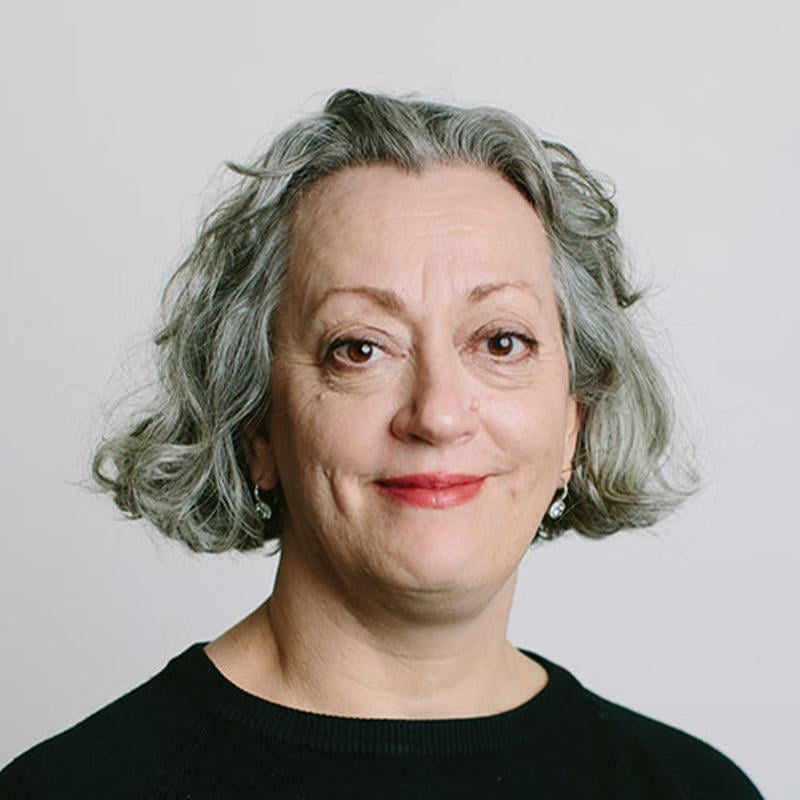
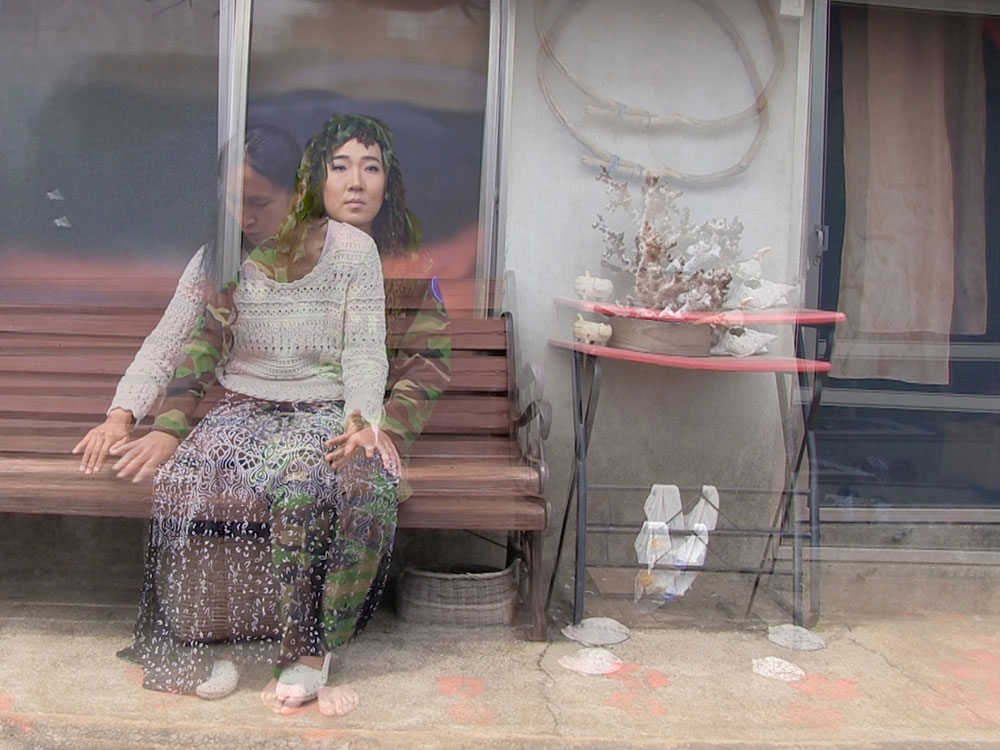












Tyee Commenting Guidelines
Comments that violate guidelines risk being deleted, and violations may result in a temporary or permanent user ban. Maintain the spirit of good conversation to stay in the discussion.
*Please note The Tyee is not a forum for spreading misinformation about COVID-19, denying its existence or minimizing its risk to public health.
Do:
Do not: